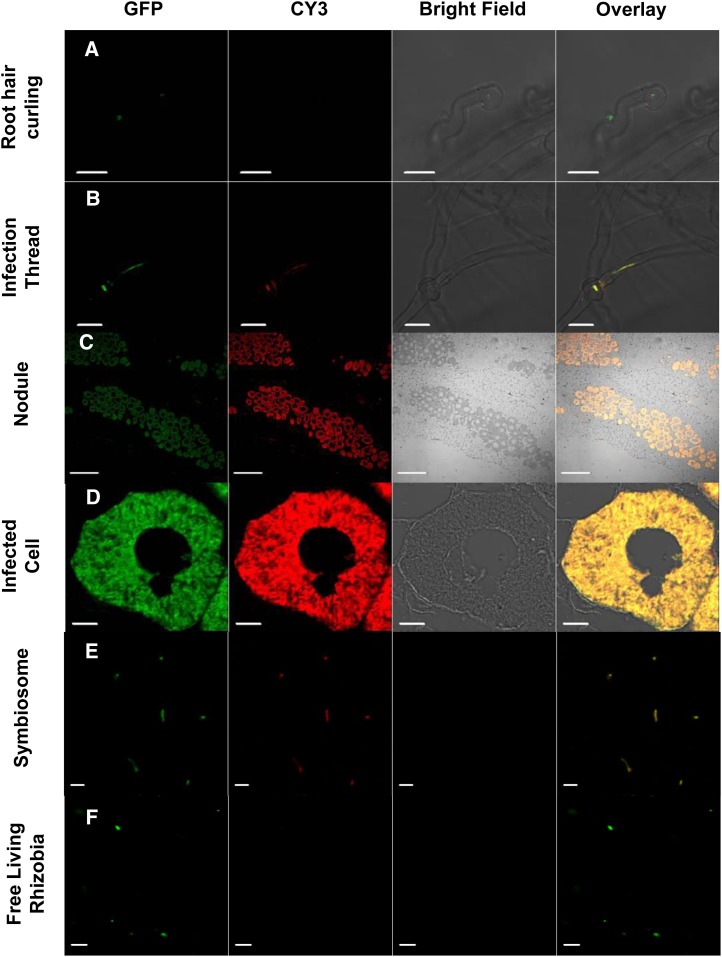Figure 2.
AsE246 is colocalized with symbiosomes in nodules. Immunolocalization of AsE246 in the infected roots of Chinese milk vetch, induced by M. huakuii 7653R, shows colocalization with GFP-labeled 7653R in ITs and nodules but not in root hair curls. A, Immunofluorescence of AsE246 in wild-type hair curling; the rhizobia are expressing GFP, but no CY3 signal for AsE246 is detected. B, Immunolocalization of AsE246 in the IT. The signal for AsE246 is revealed as red dots (secondary antibody tagged with CY3), showing colocalization with rhizobia (yellow color; in the overlay). C, Immunolocalization of anti-AsE246 on nodules. The signal shows only in the infected cells and colocalizes with rhizobia. D, Immunolocalization of AsE246 in infected cells. The signal shows specific colocalization with the nodule symbiosomes. E, Immunolocalization of AsE246 in crushed nodules, which were fixed in 4% (w/v) freshly depolymerized paraformaldehyde in 1× PBS, shows that AsE246 is localized on the symbiosome. F, Immunolocalization of AsE246 in free-living M. huakuii rhizobia as a negative control. Bars = 20 μm (A and B), 200 μm (C), 10 μm (D), and 5 μm (E and F). [See online article for color version of this figure.]

